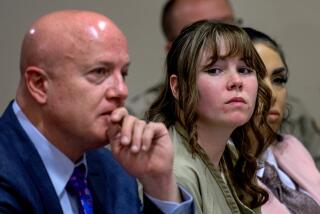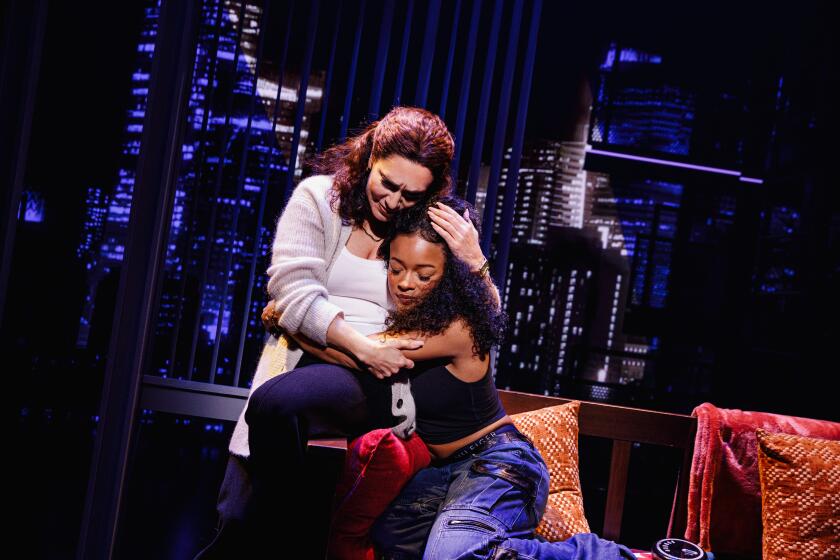Carlsbad Theatre Revival a Drama in Itself
The Carlsbad Theatre was designed to be the cultural hub of North County. Representatives from Del Mar, Vista, Fallbrook, Oceanside, Encinitas, Escondido and Carlsbad participated in the gala 1927 opening, unveiling 10 murals of scenes from their communities painted on the interior walls of the silent-film, stage and vaudeville house.
But the theater failed to achieve its lofty cultural aspirations, becoming instead a well-used second-run American film and Spanish-language movie house. Today, however, the intimate theater may be on the verge of realizing its original goal.
A sequence of events has suddenly propelled the venerable, two-story Spanish-colonial building into the spotlight. The theater’s pending revival has become something of a drama with its own cast of characters.
The chief players include Raymond and Celestine Normandin and their son, Michael, who manages the property, Carlsbad’s ambitious downtown redevelopment project and Jake Schmidt, alias Jacob Henry, a former FBI agent and investment banker who is now a private eye and a theater producer. Schmidt leased the old hall with the thought of its becoming a performing arts center.
On Thursday, live theater returns to the Carlsbad Theatre with “The Lady Cries Murder,” a surreal spoof of detective novels. Long-range plans include the possibility of a regular art film series and a complete restoration of the theater. For now, Schmidt is giving it a partial face lift with new carpet and paint.
In the wings, the Carlsbad city fathers are murmuring their approval.
“I think it would be an addition . . . a real tourist attraction,” Carlsbad Mayor Buddy Lewis said. “And not only that, I think it’ll be a real draw for the North County. Everyone I’ve talked to wants the thing. In my mind it will be a plus for us.”
The landlords also favor reviving the theater. Two years ago, Raymond and Celestine Normandin bought the theater, intending to convert it into office or retail space. But according to their son Michael, who manages the property, the Normandins discovered the theater’s history and now encourage its use as a performing arts center.
The cultural use does pose a problem.
“That puts it in a less profit-oriented category . . . . moves it into a realm of public interest,” Michael Normandin said.
Normandin said that restoring the theater is too costly for his family and, although he has no specific plan, he thinks that a public or joint public-private venture is probably the only way the theater can be fully restored and operated.
Enter Jake Schmidt, whose role is to find out if the public wants a legitimate theater company in Carlsbad.
By day, the 38-year-old Schmidt plays the role of private eye, working with his father, Jake Schmidt Sr., in San Diego. At night, he is running a theater whose first play is about a private eye called Phillip Diamond, who is searching for Raymond Chandler’s missing manuscript.
Both Schmidts are former G-men. Both are actors. To avoid confusion, Jake Jr. adopted the stage name of Jacob Henry.
Schmidt left the Federal Bureau of Investigation after six years to become an investment banker with Shearson American Express. Despite his law enforcement and business background, his excursion into theater is not out of character. Schmidt acted in high school and college plays and majored in stage directing at USC. Later, he performed extensively in summer stock in Kansas City.
Eventually, at his father’s urging, Schmidt went to law school and won an appointment to the FBI academy. During his years with the bureau, he specialized in trademark and copyright violations in the recording and motion picture industries. At Shearson, he analyzed entertainment stocks.
“It was extremely educational to learn how the economic system works, the role stock brokers play, of takeovers and mergers,” he said.
But the allure of the theater never died. Schmidt worked as an assistant director in a couple of productions at the La Jolla Stage Company. He sought approval to convert the vacant Fire Station No. 13 in La Jolla into a theater a few years ago, but the San Diego City Council turned him down.
He discovered the Carlsbad Theatre when he drove to Carlsbad to see his niece and nephew performing in the theater last school year. It was, he said, a transcendent experience.
When Schmidt walked into the theater, it looked like a scene straight out of Woody Allen’s film, “The Purple Rose of Cairo,” starring Mia Farrow and Jeff Daniel, about characters that come off the screen to become involved with the audience.
Schmidt negotiated a lease with the Normandins and created the nonprofit Carlsbad Theatre Company. He plans to produce three plays this season. John William See’s “The Lady Cries Murder” is being directed by Christopher “R” Rose, a founding member of the San Diego Repertory Theatre. Rose directed “The Lady Cries Murder” at the Rep several years ago.
The other two are Peter Shaffer’s “Amadeus,” opening in October, and an adaptation of “The Purple Rose of Cairo” that Schmidt wrote himself. Schmidt acknowledged that Allen has not yet responded to his request for permission to adapt “Purple Rose,” and the odds--given the fact that the protective Woody Allen wrote “Purple Rose” directly for the screen--seem remote that permission will be granted. Nevertheless, it is on the Carlsbad Theatre’s 1989 schedule.
For the time being, Schmidt is both managing the theater operation and providing its artistic inspiration.
“I wanted to do something innovative, challenging. It’s something I created because the theater was there and I wanted to do theater,” Schmidt said.
The growth of professional theater in San Diego has created a need for more theaters, he said.
“If you want to do movies, you go to Hollywood. If you want to do theater, you come to San Diego. San Diego is the place on the West Coast to do theater.”
Despite the growth of such theaters as the Old Globe, the La Jolla Playhouse and the San Diego Repertory Theatre, there are few opportunities for local actors, stage technicians and artists, Schmidt said.
“There’s just not enough theater, not enough space here in San Diego to give the people who live in the community a chance to . . . express themselves, to put a paint brush in their hands after sitting at a computer all day,” Schmidt said.
He sees the Carlsbad Theatre Co. as another opportunity for the county’s latent playwrights to see their “babies” produced.
Schmidt and his father have personally bankrolled much of the first show, which is budgeted at between $20,000 and $30,000, he said. Although the theater has a small orchestra pit and a modified loft for flying scenery, its small stage had to be augmented by an extension in order to handle the production of “The Lady Cries Murder.”
And there’s no place where the actors can rest backstage. To get to their dressing rooms and the company lounge, they must walk around the building, through a parking lot, onto the sidewalk and then up a flight of stairs.
Although the actors will be paid a weekly stipend, the theater would be paralyzed without dozens of volunteers who have signed up as ushers, office help and for other jobs, Schmidt said.
As for the future, “The Lady Cries Murder” and the other plays of the Carlsbad Theatre Co. season will amount to the theater’s shakedown cruise, a test of whether a professionally oriented theater will work in Carlsbad. If the shows are successful, they may pave the way for the theater’s renovation, said local history teacher and historian Shawn Jones, who has done extensive research of the theater’s history.
The theater, which now seats 430, was built in 1927 as a 600-seat silent film and vaudeville house. It was reputed to be the best equipped and finest theater in the county, outside of San Diego, Jones said.
Designed by architect Roy Struve, the theater included a ceiling that is still covered with individually pressed tin panels. The murals picturing furrowed Carlsbad bean fields, the Oceanside Pier, people at the beach, Lake Henshaw and the hills of Escondido require restoration. Originally painted by Alexander MacRae, a one-armed Scottish artist, the murals have since been painted over.
“The technology exists to save these murals,” Jones said. “The question is can we get the grants or backers to pay for the restoration.”
Over the years, the Carlsbad Theatre developed a rich history. If not quite the cultural mecca once envisioned, it was a haven for community theater and talent shows. Robert Walker, later a Hollywood leading man, strode the boards while a drama student at the Carlsbad Army-Navy Academy in the late 1930s.
Variously known as the Iris, Sylvia and Guild Fine Arts theaters, the Carlsbad mainly served as a movie house in the ‘40s, ‘50s and ‘60s, with the larger theaters in Oceanside grabbing the first run shows.
During the 1960s, teen-agers packed the theater for a rock concert to raise money to light the high school football field. For about 10 years before the Normandins’ purchase of the Carlsbad, it was a Spanish-language movie house.
Today, the bean fields that once outnumbered the humans have been replaced by modern, downtown Carlsbad. And the town has grown from a rural burg with a population of about 1,800 when the theater was built to a thriving suburban coastal community of 60,000.
More to Read
The biggest entertainment stories
Get our big stories about Hollywood, film, television, music, arts, culture and more right in your inbox as soon as they publish.
You may occasionally receive promotional content from the Los Angeles Times.






